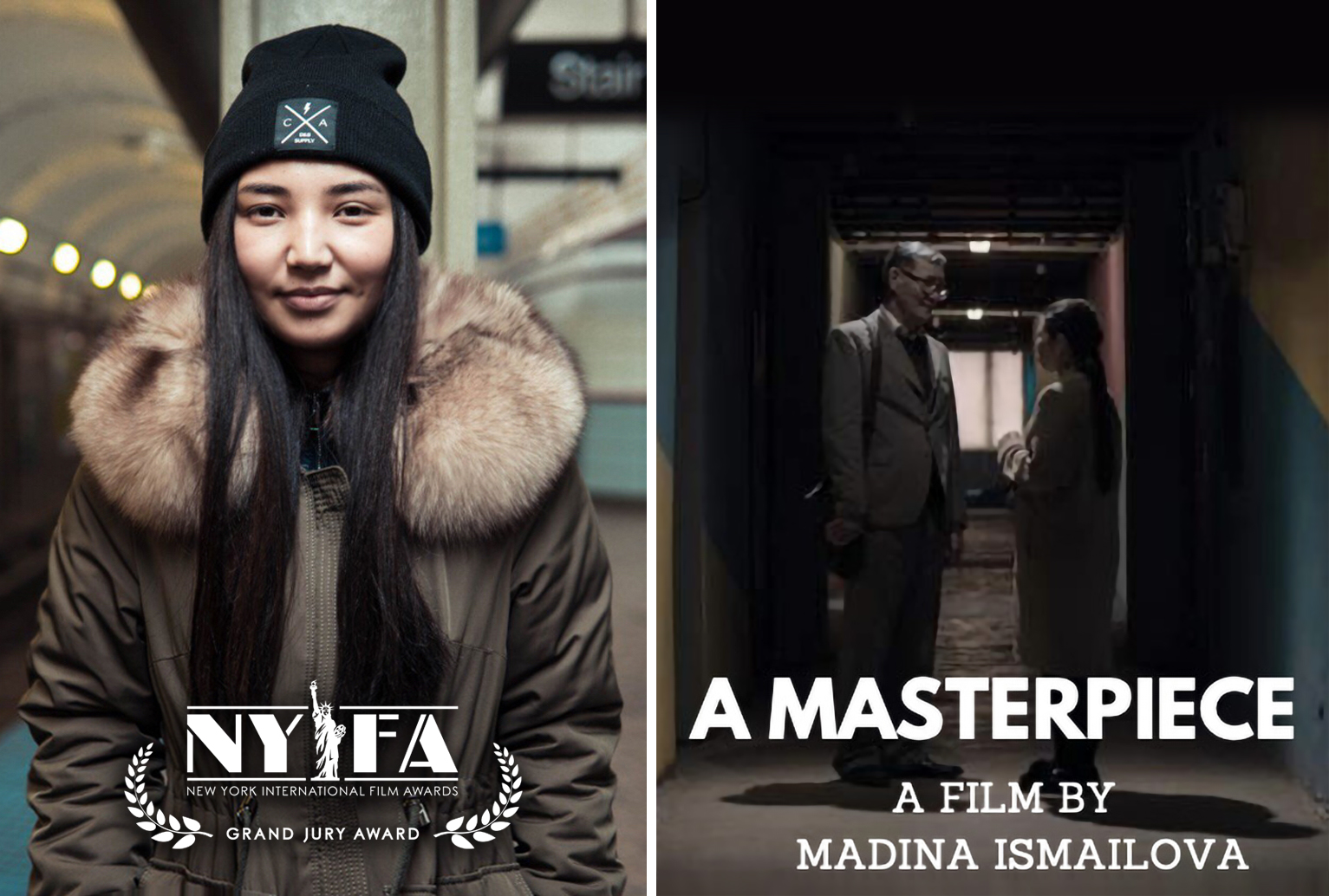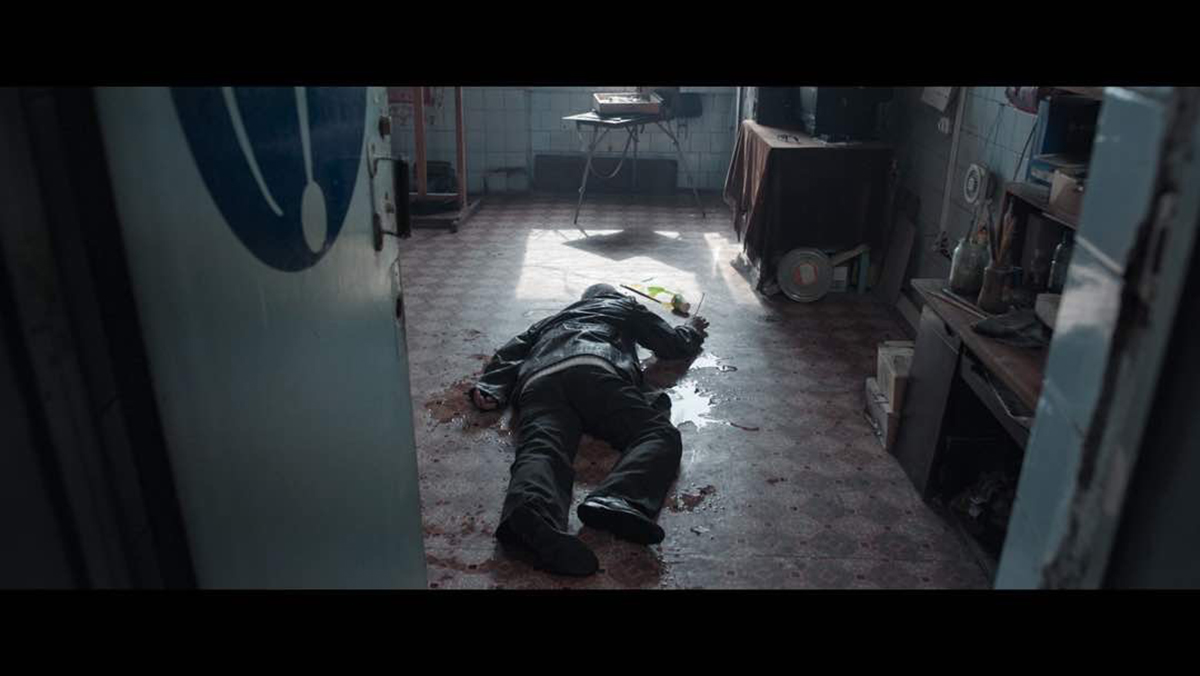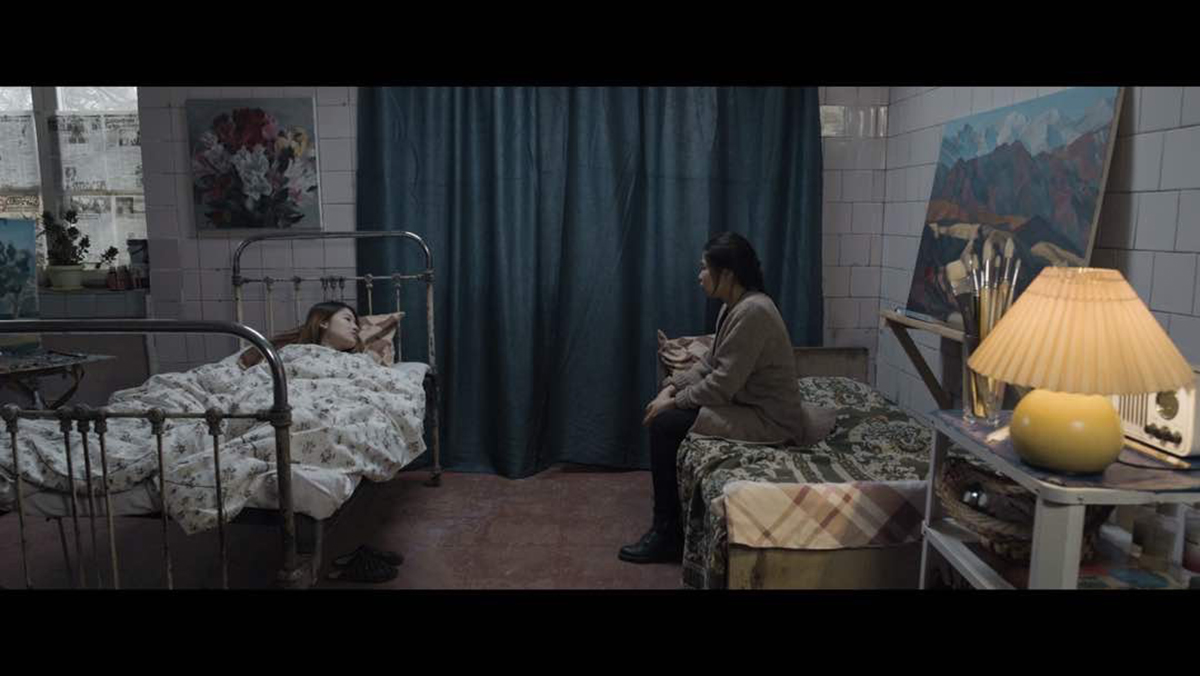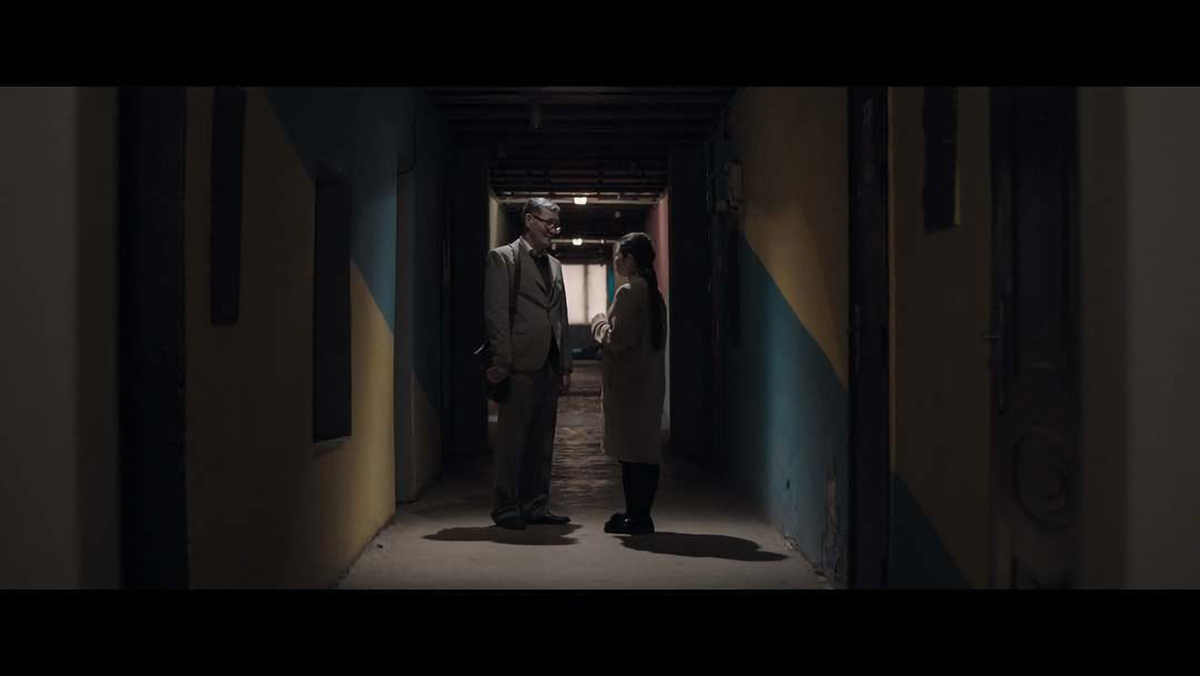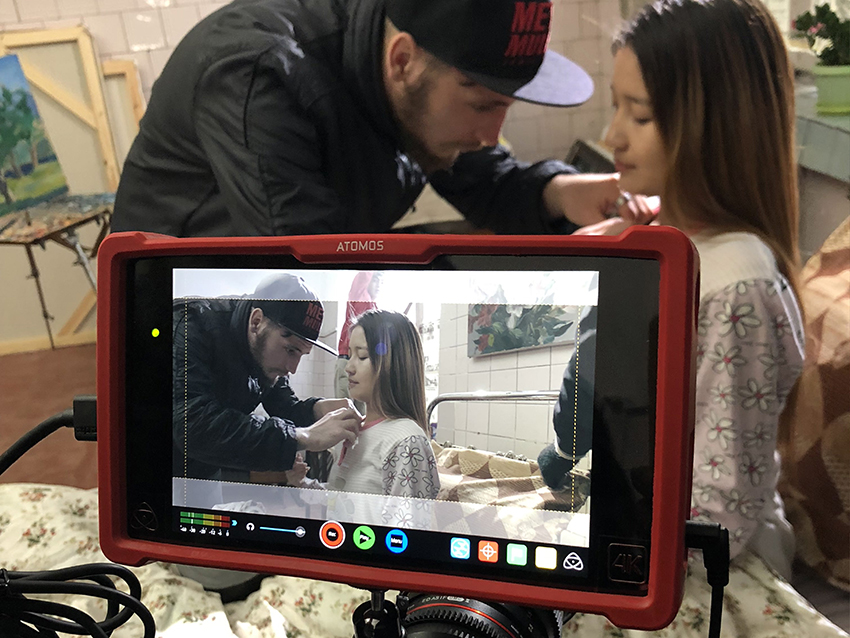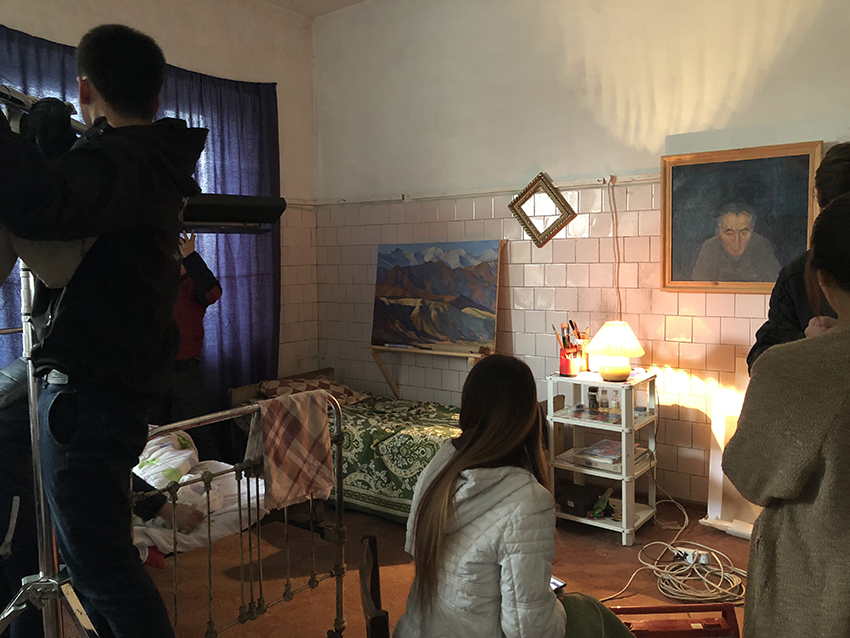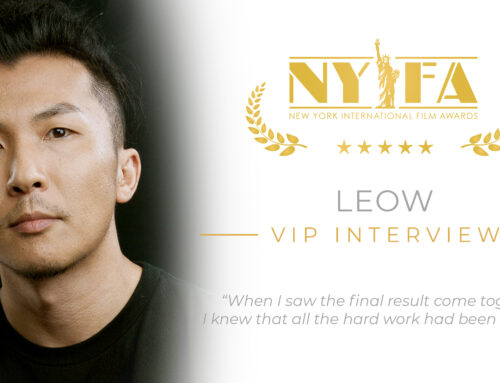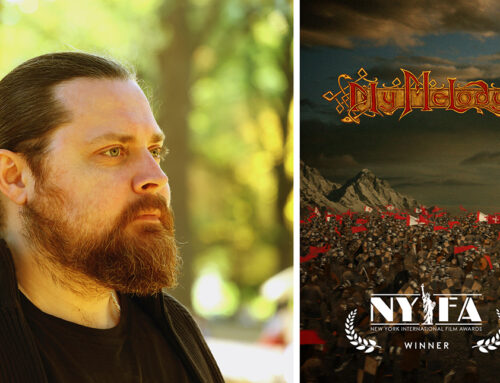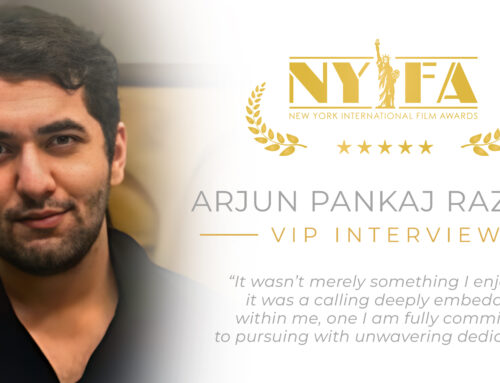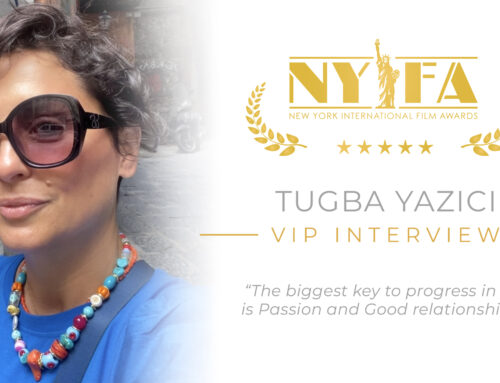VIP Interview with Madina Ismailova, writer, producer and director of the Award Winning Short Film ‘A Masterpiece’
Today we introduce Madina Ismailova, the talented writer, director, and producer of the short film A Masterpiece. In this interview, we talk about the preparation of this touching film, the team involved and how life itself and the human spirit can eventually become the final masterpiece. Enjoy!
The director Madina Ismailova and the official poster of ‘A Masterpiece’
Hi Madina, congratulations on your incredible work! Could you tell us when and why you decided to become a filmmaker?
When I was quite young, I had a profound fascination with storytelling and the power of moving pictures. The pivotal moment that ignited this passion was my childhood while growing up in a small, faraway village in Kyrgyzstan. I vividly remember being mesmerized by the cinematic world that unfolded on my grandparent’s television screen. The intricate stories, compelling characters, and immersive cinematography transported me to different realms, sparking my imagination and curiosity. I was captivated by the ability of film to evoke emotions, convey messages, and create a profound impact on its viewers.
This early exposure to the magic of cinema left a mark on me. When it the time to choose what I wanted to do – it was the moment of realization that storytelling through filmmaking was the path I wanted to pursue. I became driven by the desire to dissect, analyze, and delve deep into the intricacies of storytelling, aiming to craft narratives that could elicit emotions, challenge perspectives, and inspire meaningful conversations.
Which movies and/or directors inspire you the most?
I find inspiration in a diverse range of movies and directors.
Federico Fellini – “8½”: Fellini’s imaginative storytelling and surreal visuals in “8½” have deeply influenced my narrative and visual aesthetics approach. His ability to blend reality and dreams has encouraged me to think outside the box when crafting stories.
Hirokazu Koreeda – “Nobody Knows” and “Shoplifters”: Koreeda’s poignant exploration of family dynamics and human relationships in films like “Nobody Knows” and “Shoplifters” has inspired me to delve into the complexities of interpersonal connections and the emotional depth of characters.
Sian Heder – “CODA”: “CODA” by Sian Heder showcases the power of storytelling to shed light on unique human experiences. Heder’s ability to convey the journey of a deaf child of hearing parents has encouraged me to explore diverse perspectives and tell stories that foster empathy. These directors and their works testify to the diverse and impactful storytelling that cinema can offer. They inspire me to push the boundaries of my creativity and continue to explore the nuances of the human experience through filmmaking.
Dinara Asanova’s work, particularly “The Key That Should Not Be Handed On,” is another source of inspiration for me. Asanova’s storytelling in this film offers a unique perspective on life and the passage of time. Her ability to create thought-provoking narratives and explore profound themes has influenced my own approach to storytelling. “The Key That Should Not Be Handed On” reminds me of the power of cinema to capture the essence of the human condition, often in subtle and contemplative ways. As a filmmaker, I draw inspiration from directors like Dinara Asanova, who have a knack for crafting emotionally resonant narratives that stay with the audience long after the credits roll. It reinforces my commitment to creating cinema that entertains and encourages reflection and a deeper understanding of the world around us.
Can you tell us more about the cinematic landscape in Kyrgyzstan?
The cinematic landscape in Kyrgyzstan, a country in Central Asia, is a unique and vibrant tapestry that reflects its rich cultural heritage, natural beauty, and the evolving aspirations of its filmmakers.
Kyrgyzstan’s film industry is relatively young compared to some of its neighbors in the region. However, there has been a growing interest in filmmaking in recent years, with more local talent exploring the medium and producing a range of films. And Kyrgyzstan’s stunning landscapes, featuring majestic mountains, vast steppes, and pristine lakes, provide a captivating backdrop for many films. These picturesque settings have attracted filmmakers from around the world. Surely, like many emerging film industries, Kyrgyz cinema faces its share of challenges, including limited funding, infrastructure, and access to international markets. However, these challenges have also sparked creativity and resourcefulness among local filmmakers. Overall, the cinematic landscape in Kyrgyzstan is evolving, and its filmmakers continue to explore new horizons, share their stories, and contribute to the global conversation in cinema. Kyrgyz cinema is a testament to the power of storytelling and the enduring spirit of creativity in the face of challenges.
You are the producer, writer, and director of the short film: “A Masterpiece”. When did you first have the idea of writing the script, and how challenging has it been to step from writer to producer to director during filming?
The idea for “A Masterpiece” had developed in my mind for quite some time before I finally decided to bring it to life. It was during introspection and creative exploration that the concept for the film began to take shape. The themes of art, inspiration, and the pursuit of one’s creative vision were central to the story, and I was eager to translate these ideas into a cinematic experience.
Transitioning from being the writer to taking on the roles of producer and director presented its own challenges. While writing the script allowed me to envision the story’s narrative and characters, producing required meticulous planning, resource management, and ensuring that every aspect of the production was well-executed within the budget and schedule.
As a director, I needed to bring the script to life visually, making decisions about camera angles, framing, lighting and working closely with the cast and crew to capture the essence of the story. Juggling these roles demanded careful coordination and a clear vision for the film.
What is the connection between Anya and the last leaf of the tree?
The connection between the main character and the last leaf of the tree in “A Masterpiece” is symbolic and deeply meaningful. The last leaf represents a source of inspiration and hope for the main character, serving as a metaphor for their creative journey and personal struggles. Throughout the film, the main character faces losing hope or moments of despair. The last leaf, clinging tenaciously to the tree despite the changing seasons and harsh weather conditions, symbolizes resilience, determination, and the enduring power of creativity.
In essence, the last leaf becomes a muse for the main character, a silent companion that encourages them to persist, create, and strive for their artistic masterpiece. It is a powerful symbol of the transformative and motivating force that art can be in the lives of creative individuals.
Anya recovering from her illness and Emin Aga’s death are deeply connected in the film. Could life and death themselves be the real masterpieces in the story? What is the message you want to communicate to the audience through your movie?
I absolutely love that you said life and death can be seen as the real masterpieces in the story. The film intertwines the themes of creativity, resilience, and the human experience with the profound aspects of life and death. These themes serve as a canvas on which the film paints a message of hope, transformation, and the enduring power of art. The message I aim to communicate to the audience through the movie is that art has the capacity to transcend the limitations of mortality. It allows us to capture moments of beauty, inspiration, and profound human connection that endure long after we are gone. In this sense, art becomes a testament to the masterpieces of life and the human spirit.
We found it really interesting, when the camera moves back from the window to reveal the composition of Asya in her bed for the first time. It gave us the feeling of a painting into a painting. Is this the effect you were trying to achieve? How did you work with your DOP during the shoot?
I’m delighted that you found that scene interesting and visually engaging in “A Masterpiece.” Indeed, the effect of the camera moving back to reveal Asya in her bed was intended to create a sense of a painting within a painting. This visual composition aimed to convey the idea that art and life are interconnected and that the characters themselves are living works of art.
During the shoot, we discussed the specific shots, angles, and lighting that would best capture the essence of each scene, but we also left a lot of room for freedom, creativity, and spontaneity. We paid particular attention to the use of framing and composition to convey the themes and emotions of the story. In the scene you mentioned, Chyngyz Sulumbekov, the Director of Photography, and I worked together to ensure that the camera movement and framing achieved the desired effect, emphasizing the artistry and depth of the characters’ experiences.
The creative synergy between the director and the DOP is essential in translating the script into a visually compelling narrative. Collaborating closely with Chyngyz allowed us to capture the nuances and symbolism in the film, enhancing its overall impact.
Where and when did you shoot it? Can you tell us more about the team involved in the production?
We shot “A Masterpiece” in various locations, primarily in Kyrgyzstan, where I wanted to capture the natural beauty of the artist’s environment in the story. The shoot took place during the late spring and early summer months to make the most of the picturesque surroundings and natural lighting.
I have been very lucky to work with the most talented people in the industry. I had the privilege of collaborating with a talented and long-time friend who was the Director of Photography. His expertise and creative vision played a significant role in capturing the visual essence of the film, bringing my script to life through captivating cinematography.
Belek Arabaev, Art Desoghner, was instrumental in creating the unique atmosphere of the artist’s environment in the film. His creativity, particularly in designing and integrating the leaves, added a special dimension to the story. Belek’s dedication to the project was truly remarkable.
Nurjan Idrisova, our First Assistant Director, was a driving force behind the production. Her exceptional organizational skills and commitment to the project ensured that everything ran smoothly on set. I trusted her implicitly, and her contributions were invaluable to the film’s success.
It’s been an incredible journey working with these talented individuals, and their dedication to the project was evident in every frame of “A Masterpiece.” Their expertise, creativity, and collaborative spirit were essential in bringing the story to life. I consider myself fortunate to have had the opportunity to work with such a passionate and capable team in creating this film.
In recent years, the film industry has witnessed a significant rise in the number of remakes of classics and cult favorites. Where do you stand on this new tendency?
As a filmmaker, I feel good about the recent surge in remakes of classics and cult favorites. This trend can be seen as an opportunity to reintroduce timeless stories to new generations, ensuring that these narratives continue to resonate with audiences over time. Moreover, remakes can offer a fresh perspective on familiar narratives, infusing them with modern sensibilities and addressing contemporary issues. This can lead to thought-provoking reinterpretations that spark meaningful discussions among viewers.
What were the most challenging scenes to film technically and emotionally?
Certainly, filming the scene where the leaves were falling from the tree was a significant technical challenge, primarily because we had to create those leaves ourselves to achieve the desired visual effect. It required meticulous planning and coordination to make the leaves appear natural and convincing on screen.
Emotionally, one of the most challenging scenes was the final one, where the main character learns about the passing of the old artist, Emin. This scene carried a profound emotional weight, marking a pivotal moment in the story. Conveying the depth of the character’s emotions and their response to this loss was crucial to the film’s impact.
What do you think are the toughest aspects of making a film today?
Making a film today has unique challenges and complexities, and several aspects can be particularly tough for filmmakers. Securing funding for a film project is often one of the most challenging aspects. Filmmakers must navigate the intricacies of financing, which can involve finding investors, applying for grants, or crowdfunding. Balancing the creative vision of a film with the available budget is a constant challenge. Filmmakers often need to make compromises without sacrificing the quality of the final product. Post-production’s editing, sound design, and visual effects stages require meticulous attention to detail and often demand additional time and resources. Achieving the desired final cut and ensuring a seamless viewing experience can be tough.
What’s next for you? What are you working on right now?
As a filmmaker and storyteller, I’m always driven to explore new narratives and create meaningful cinematic experiences. Currently, I have several projects in the works, each with its own unique story and vision. I’m excited to be working on my feature film, which is a significant milestone in my filmmaking journey. This project allows for a deeper exploration of themes and characters, offering a more extensive canvas to tell a compelling story. I’m actively exploring collaborations with talented filmmakers, writers, and artists. Collaborative projects allow combining creative forces and bringing diverse perspectives to the forefront. I’m committed to continuing my exploration of diverse storytelling. Whether it’s delving into different genres, cultural perspectives, or innovative narrative structures, I aim to create films that challenge perspectives and foster meaningful conversations.
Follow Madina Ismailova and her projects on:

